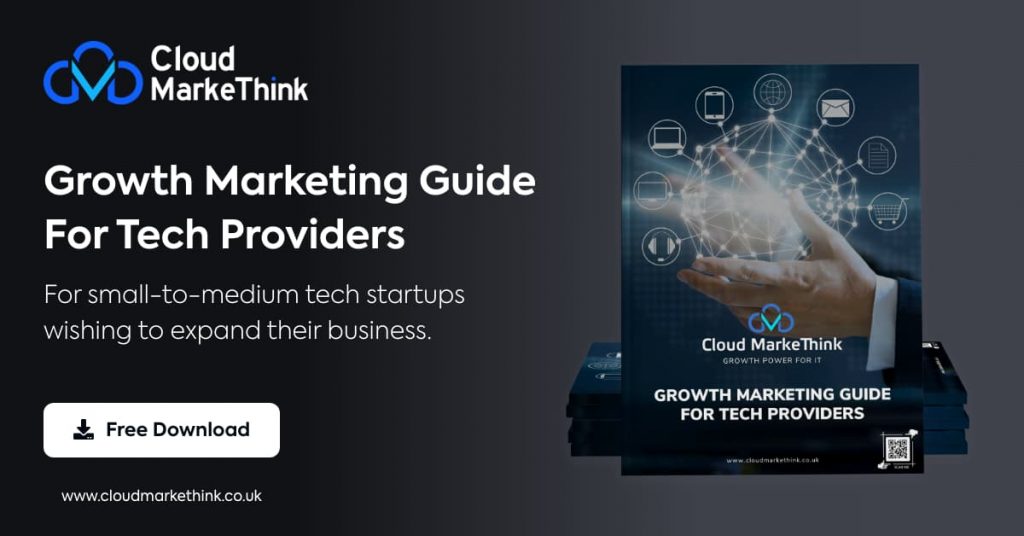
Scope of This Ebook
In this ebook, we are going to take a look at why tech companies need to do marketing, how they should go about it, what makes them different from other types of marketing, the main challenges they face, and of course, how to get it right.
Why do Tech Companies Need to do Marketing
As of 2018, tech companies were only allocating 5% of their operational budgets to marketing. Moreover, only 11% of IT providers considered marketing to be an integral part of their work.
Now, fast forward to 2021! Average marketing budgets are 15%, and 68% of tech companies have an extensive marketing need. Moreover, a whopping 56% of these companies agree that marketing has impacted their sales.
So, it’s evident that tech companies see a need for marketing, but why?
How often do you come across a salt manufacturing company or a fashion brand that is ready to offer a demo? Not very often, unless it’s a new breakthrough brand, really trying to build a niche. You would never see the established players do this. However, when we look at some of the most established players in IT, we are still going to find top players like Amazon Prime, Netflix, HubSpot and GoDaddy offering demos or free trials.
They’re willing to hand it all over to their prospective leads. We must ask why at this point. The simple answer is that this is the nature of tech companies and this is how you do tech marketing. Even if you’re at the top of your game, technology is a niche that is constantly changing, and with most tech companies directly serving other businesses, they have to be highly focused on the business they are serving. Regardless of whether it is 20 or 2,000 businesses, the focus is highly concentrated and yet at the same time catering to a bulk.
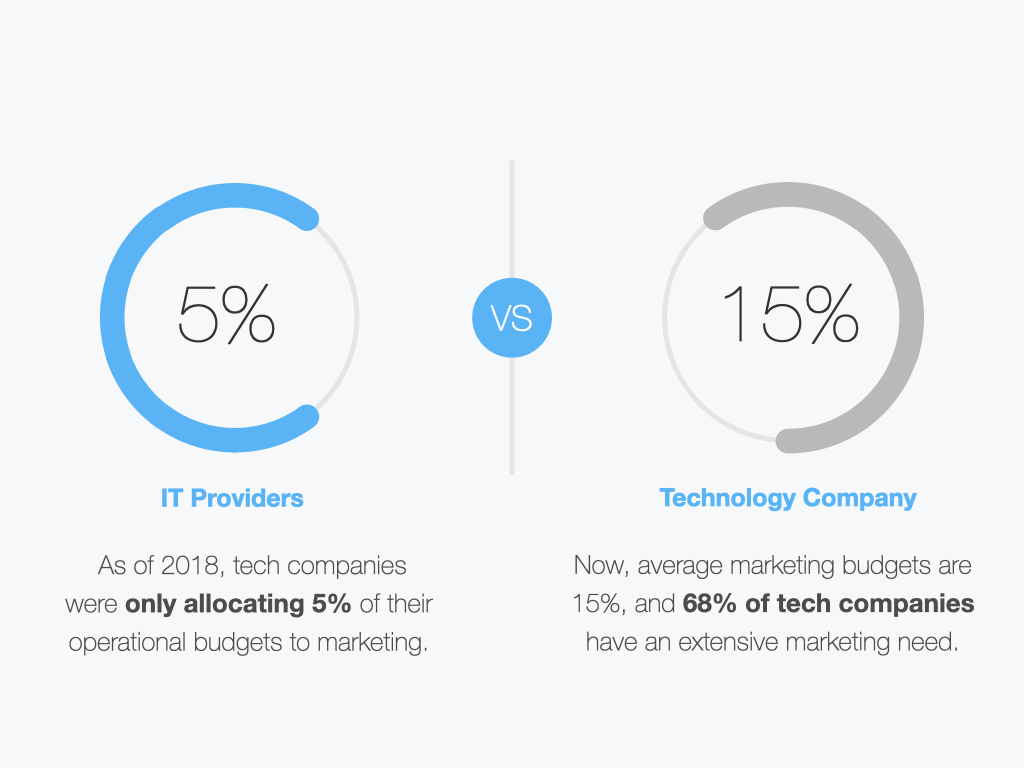
Moreover, there is no supply deficit. A lot of varied offerings come under the compounding label of IT companies, Meta is a tech company, as is Netflix. From a cloud provider to a CRM to cyber security, these are all IT businesses. The products they offer vary greatly. They may offer one service or they may offer it all. What, though, binds them together? The fact they all seem to be complicated computer stuff to an outsider. To say the least, it can be overwhelming for people. So, the race to be the easiest, friendliest, and helpful-est is always on! And no matter how well-established you are in this field, someone else could easily dethrone you.
Tech companies need marketing to generate not just leads but also a demand for their services. Marketers help bring in traffic, sales, and ultimately, quality leads that help nurture a business.
What is Tech Marketing and How does it Differ from Non-tech Marketing
The answer is in the very name, or should we say, in the very product? Non-tech encompasses everything that you could think of, from a shawl to a steel factory, but due to every industry’s ongoing reliance on IT services, this industry, with all its hardware and software, is now an integral part of most niches. However, in the case of tech, a product isn’t always physical, if we exclude the hardware aspect. Tech products and business models largely revolve around virtual services and that is their core product. Unlike soap or steel, their utility and applications continue to get outdated every day.
Therefore, understanding the project from a conceptual coder-stage and being able to communicate it to the user, eliminating jargon, and bringing forth solutions, is the primary function of marketing for tech.
Demand generation is also huge for tech companies, which struggle to often convince a business that Excel is not the smartest way to keep data. Look at someone as famous as Netflix, which has to constantly innovate itself to stay relevant. For tech companies, demand generation happens via events, virtual PR or digital marketing, and organic methods. For non-tech companies, demand is largely there, and they exercise lead generation instead.
Another salient difference is that non-tech companies usually exercise transactional marketing.
Transaction marketing is intended to register a sale, and the messaging copy is direct with an emphasis on the price-product aspect of the mix.
You see a Zara commercial on social media, you purchase the new Zara denim. That marketing campaign has succeeded. For the longest time or at least the first 20 years of their developments and doing their marketing, hardware companies would only focus on the numbers. You may think, isn’t sales the endpoint of all marketing? However, now, B2B and B2C IT marketers realise that it is easier to upsell and cross-sell to an old buyer. New customers also require more energy, effort, and money spent over closing the deal.
It is because of this that most Tech companies do not strive for sales as their primary takeaway from a customer touchpoint. 90%, a whopping near entirety of tech marketers define two primary objectives: Build relationships, and nurture leads. They benefit more when the brand forges long-lasting meaningful relations with their consumers, and so tech marketing is more relationship marketing.
Even when IT companies are majorly B2B, individual buyers and B2C leads can’t be ruled out. It is also where Account-based marketing comes into the picture, where marketing ideas are curated to serve each account specifically. This is why, in tech start-ups, a term “product manager” and “customer success manager” has become a rather mandatory employee position to have. The job of these product managers isn’t to only work at the product backend, but, it is much more. They have to ensure the user finds the product useful and account-specific customer success agents work on specific businesses, nurturing them and improving the brand’s Net Promoter Score (NPS). NPS is among the various metrics that help experts understand how customer satisfaction looks like at a company. Brands with a higher score between 6 to 10 (on a scale of 10) are more likely to be recommended or referred to, by their older customers. Word of mouth is a game-changer for your IT brand, and that is why you need a high NPS. Brands with a moderate and, worse, low NPS would not be advised to work with and some customers may do quite the opposite, leaving behind a bad word for your company. It is the job of your tech marketers to ensure that your online reputation and NPS do not plummet owing to inconsistent marketing tactics.
However, the major difference remains that IT services need people who understand the product. Even though a marketer’s job is to make campaigns, IT needs absolute insight into the product, its competition, and its loopholes, too, to fool-proof and fail-proof your marketing.
Challenges with Tech Marketing
Not traditional marketing, but got traditional marketers:
The foremost challenge facing a tech marketing company is that it has marketers, but they do not have tech exposure. They have past experience of working for non-tech companies for years, and that is not a problem, as long as they are willing to unlearn.
Making the transition from non-IT to IT would require picking up new tools, skills, tonality, and methods. Let us explain how going about IT similar to non-IT is detrimental to your brand positioning. 30% of B2B marketers agree they don’t fully understand the IT services they sell. Now, this would be okay if this were an FMCG brand or a fashion line. However, for a tech service, a major part of marketing is convincing the user to make the switch. A tech company’s whole business is built around the product. For IT companies that have singular products, each cog in the chain has to work in sync. Even when an IT company has multiple products, it is essential to recognise that they are all interconnected. For instance, a web-hosting and domain plan can be upsold with complete website development services. An efficient marketer recognizes that tech is a complex new-age business.
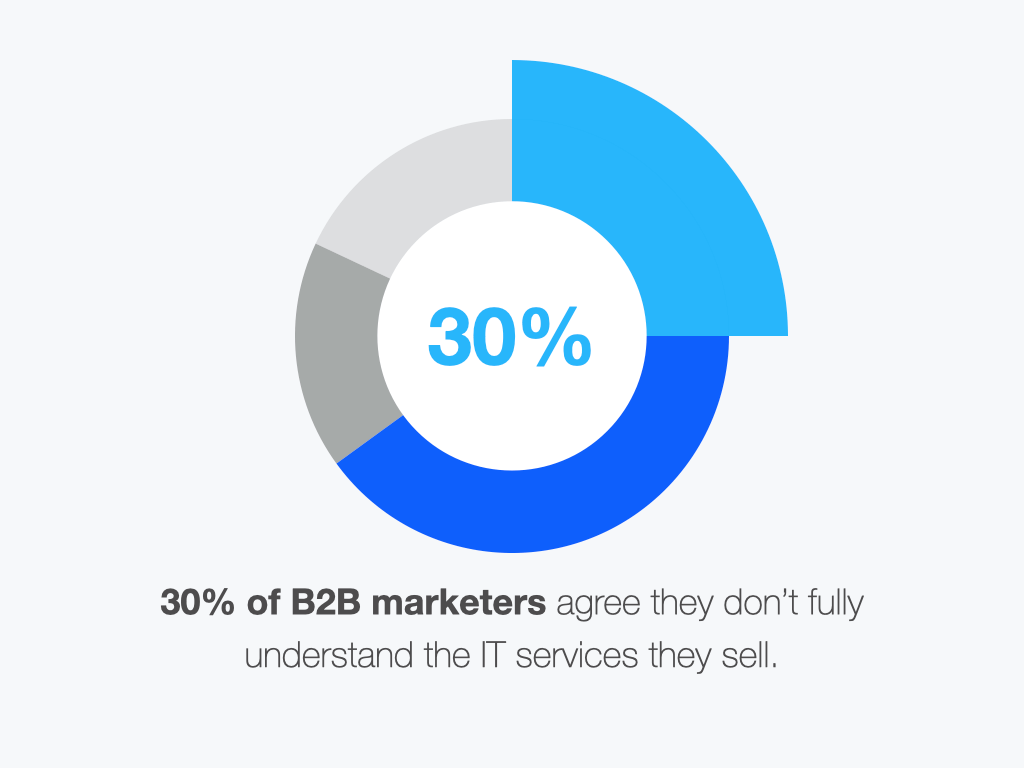
Moreover, tech marketing also involves a lot of technical writing. Hiring content writers that are not well-versed with those nooks and crannies of your business can actually ruin your marketing copy and repel your prospects.
This is also where UI/UX writers come into the picture, who help you make copies that don’t just walk your user through the application, but also make it look appealing and easy-to-use. An important meeting point for content and marketers is to agree on user-friendly messages and to work for more than just SEO. 46% of top marketers currently have no experience in tech, which is where the major gap is.
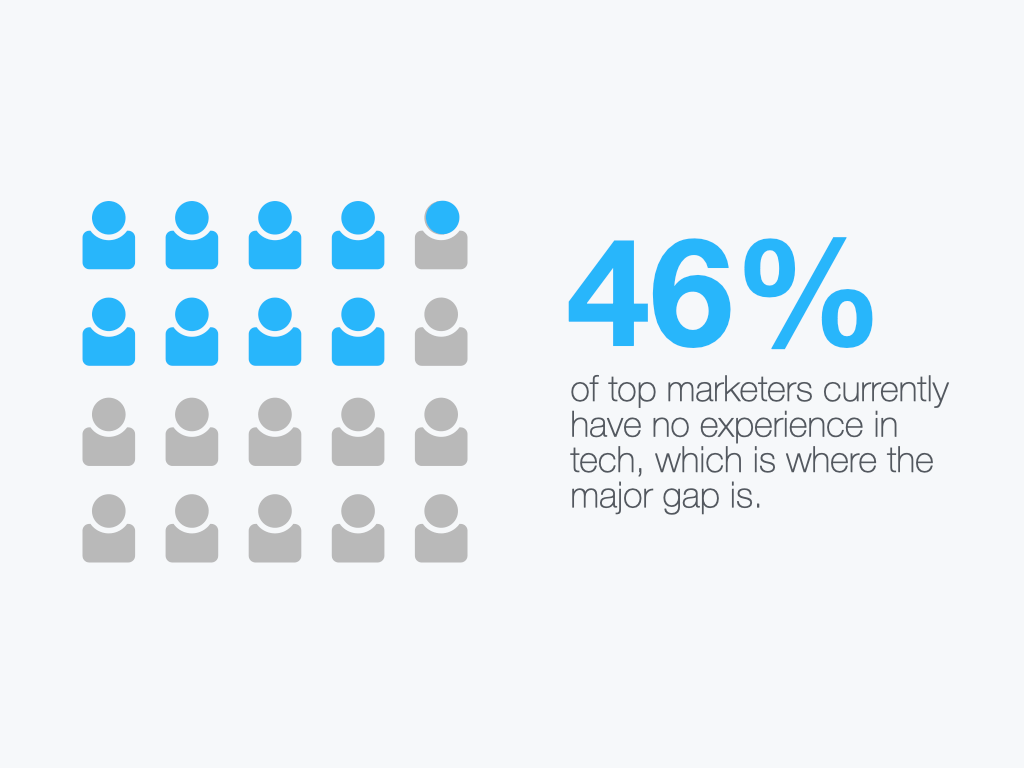
This is also true for companies that involve in cloud hosting, where most users may fail to see the utility of a product unless you are able to communicate it to them. Many IT providers are in this huge group where they have an amazing product, but they do not have the right words for it.
Non-linear funnel
The marketing funnel in tech companies, more than in any other industry, is nonlinear. This means that a lead can anytime go from a prospect to a lead, and a prospect, who was just a step away from buying, would probably have a check outside your business and maybe they would find your competitor’s pricing more economical.
The process of purchase in IT companies is lengthier than in other industries because of the complexity this industry has. A user may need more white papers or demos to actually make that purchase. In tech, the marketing funnel is not a triangle, it’s not a straight walk. A moving circular board, if we are being accurate, is the funnel.
Downside: Constantly have the risk of leads dropping out.
Upside: You also have the chance of getting old prospects back, two or three years later, who come back ready to buy in a jiffy!
The purchase cycle in this industry is 40% longer than other industries and what this means is that you may have to wait before you finally have a sale. This is usually discouraging for marketers who come from non-tech backgrounds, where they have gotten used to seeing great results overnight. Eventually, IT may have that opportunity. Once you’ve established yourself, and once you have that authority in the domain, it’s a cake walk. But, we can expect such prospects for a longer haul, where that could be true, definitely not when you’re just starting out!
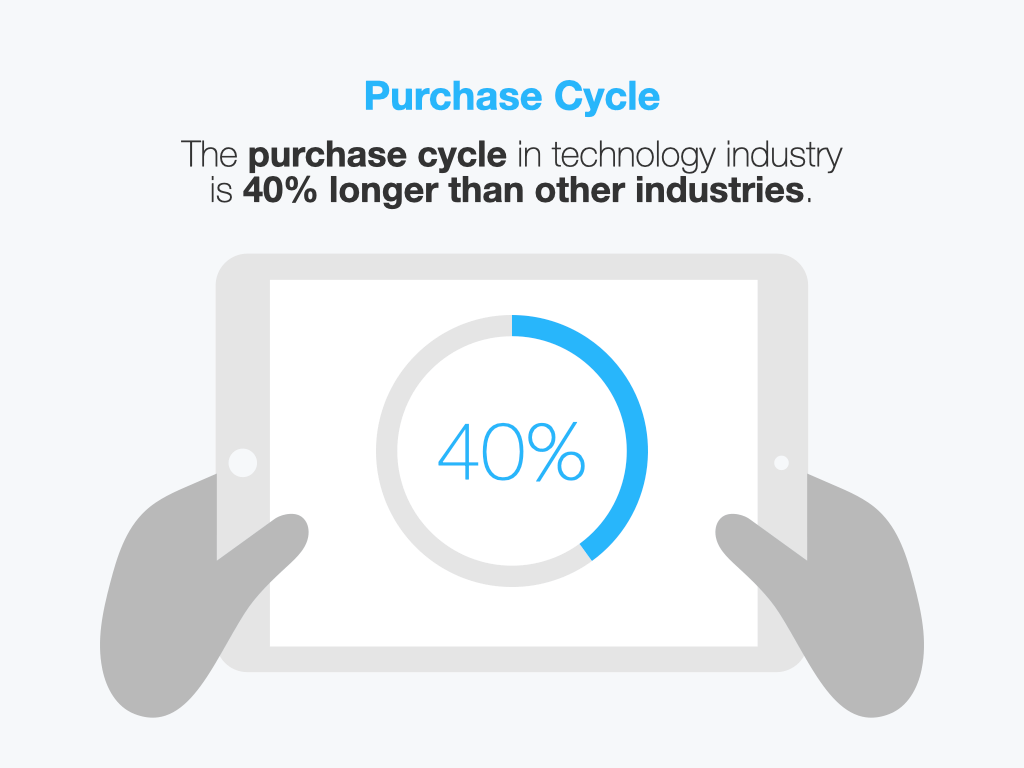
Easing a lead into becoming a client
So, what happens when a lead is ready to buy?
Even if a prospect is interested in buying your software, they may not fully understand it. In such a situation, you would have to provide blogs, tutorials, demos, dedicated agents and a lot more than what FMCG or retail companies have to cater to.
Even if you’re serving the B2C niche, there are very good chances that your product may not be used exactly the way you want it to be used, so you always have to be open to tweaking it or to helping each customer individually and facilitate seeing the utility.
Targeting effectiveness
The IT industry is peculiar in the sense that your customers will be niche and targeted, but, at the same time, you would have to still appeal to a wider audience because IT is constantly growing. It is projected that by 2030, 62% of businesses would need IT services, and the number currently is only at 12% world-over. More and more businesses that need these solutions are coming up. For instance, during the pandemic, the number of people using Zoom multiplied exponentially. The number of people using Asana quickly shot up (by 482%), so, companies like Asana and Zoom had to quickly accommodate an overnight shift and make the most of this pandemic. Their marketing had to account for the changes and start appealing to this newer audience that had come. However, what that also means is that a lot of learning curves were flattened as they had to make the adoption process easy and smooth.
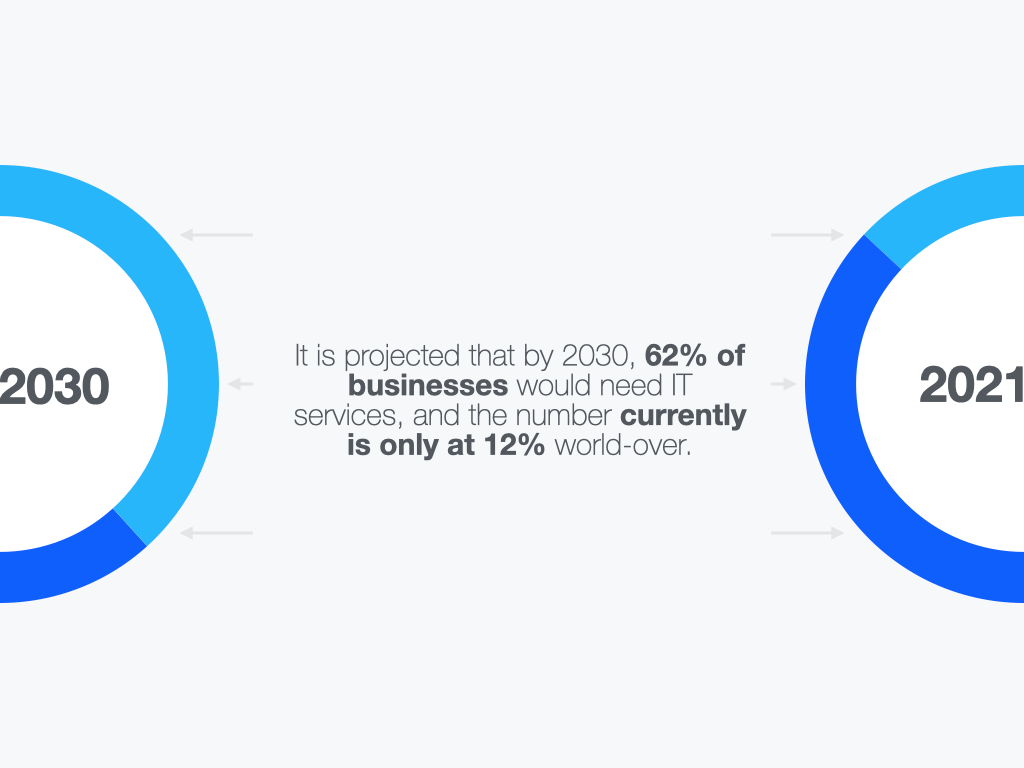
Moreover, the competition is fierce in this niche, and the newer you are, the harder it gets to pick clients. Many start-ups, especially tech, find themselves confused on how to go about advertising their services properly. Not knowing how to use ad tools wisely can lead to negative returns.
Personalisation
IT may be a B2B industry at large, however, software providers that recognise there is a huge scope of personalisation would thrive. Even if you offer 20 types of hosting plans or cloud plans, you may still have that one customer who doesn’t need one feature of that one plan and he would like to work you around it. This is where you leave a scope for customers’ customisation. If you really have to keep that lead coming back for more, your product should be adjustable, and your marketing copies need to be made in a way that indicates that you’re flexible while at the same time already providing a product, which is ready to ship as is, the way the customer may be largely looking for.
Multiple people calling the shots
When a business chooses to buy an IT solution, the decision is not made in a day. There are various stakeholders who make that decision from the HR manager to the sales manager to probably the Board of directors to a normal executive whose learning curve is also considered. These things would influence your buyer decisions. You’re actually not reaching out to just 1 individual in B2B. You’re reaching out to many individuals. This is a bottleneck for the IT industry where it has to make sure decision-makers find it useful for the higher management and the executive alike, while also ensuring there is a potential for future upscaling or downsizing.
Moreover, a general disconnect is noticed in the manner that marketing aligns with the sales op team in a tech business.
While marketing is responsible for bringing in leads, it is the sales department that takes it up from there. The sales guys have to walk the leads through the various levels of the prospecting funnel, which is usually single-handedly set by the marketing guys. Moreover, salespeople rely heavily upon research papers, blogs, thesis, etc., which are, again, areas of marketing purview.
A disconnect between marketing and sales often leads to a few leads falling out, purely because the two weren’t aligned. These leads that have slipped out from the cracks might have become long-lasting accounts!
Upselling/cross-selling
The competition is fierce and if you offer prices that are higher than most, you have chances of not being able to upsell or cross-sell, at all. However, just reasonable pricing isn’t enough when you are pitching an IT solution to your customers. You have to take into account that there may be a learning curve again with this new product. You also have to consider that they may not really see the utility in the product. You would have to convince them that there is. So, you would have to treat your old customers like your new customers every time you have a new product.
What are the Foundational Components of a Great Tech Marketing Strategy
A Website
To begin with, you can’t be an IT services provider, who doesn’t have an impressive website of its own. While you may have a website, you would have to take into consideration how appealing and easy to understand it is for your user. Secondly, the loading time has to be real fast because if that window’s big, your customers are going to jump right off it.
67% of marketers attribute high bounce rates to be the biggest killer for a website.
A website is like your virtual home. Your virtual address. Make sure that it is beautiful to look at and that is the first step in your marketing game.
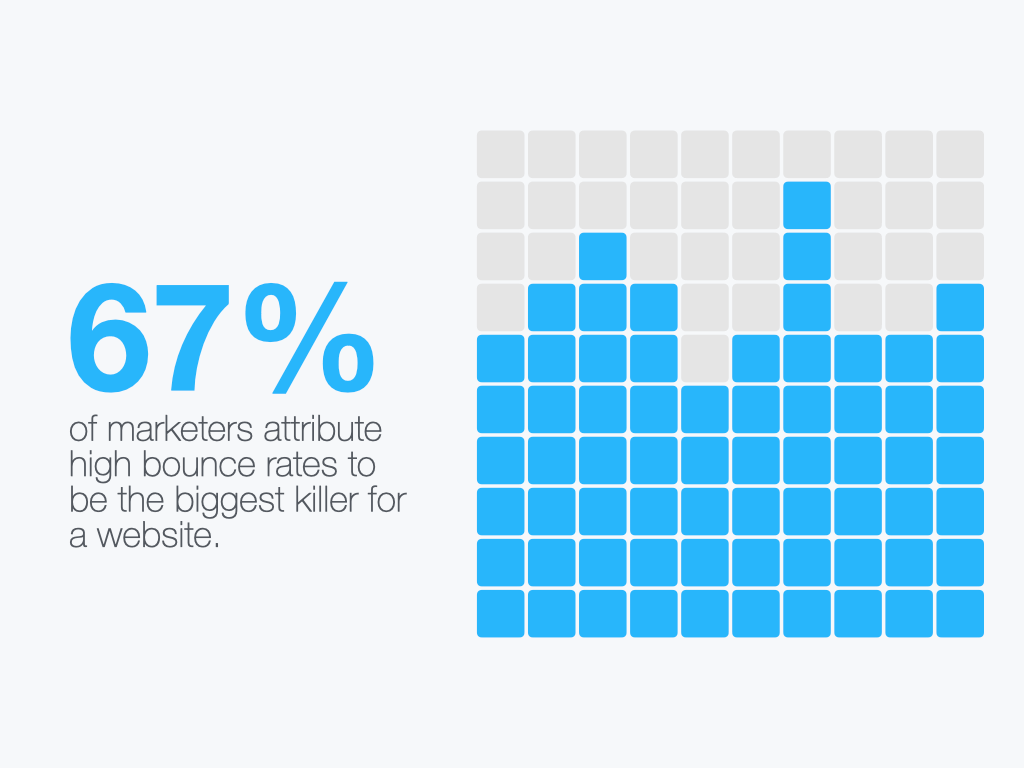
Marketing Channels
We live in an age where a company has a lot of channels to choose from. Do you want to promote yourself via email marketing or do you want to do content marketing instead? What suits your business more? There’s no harm in going omnichannel, but you have to keep an open mind to focusing on some channels more than others, which is always based on the specific business you have and where your audience is, or where you’ve seen the most work come from.
To build awareness
31% of marketers feel blogs and long-form guides are the answer.
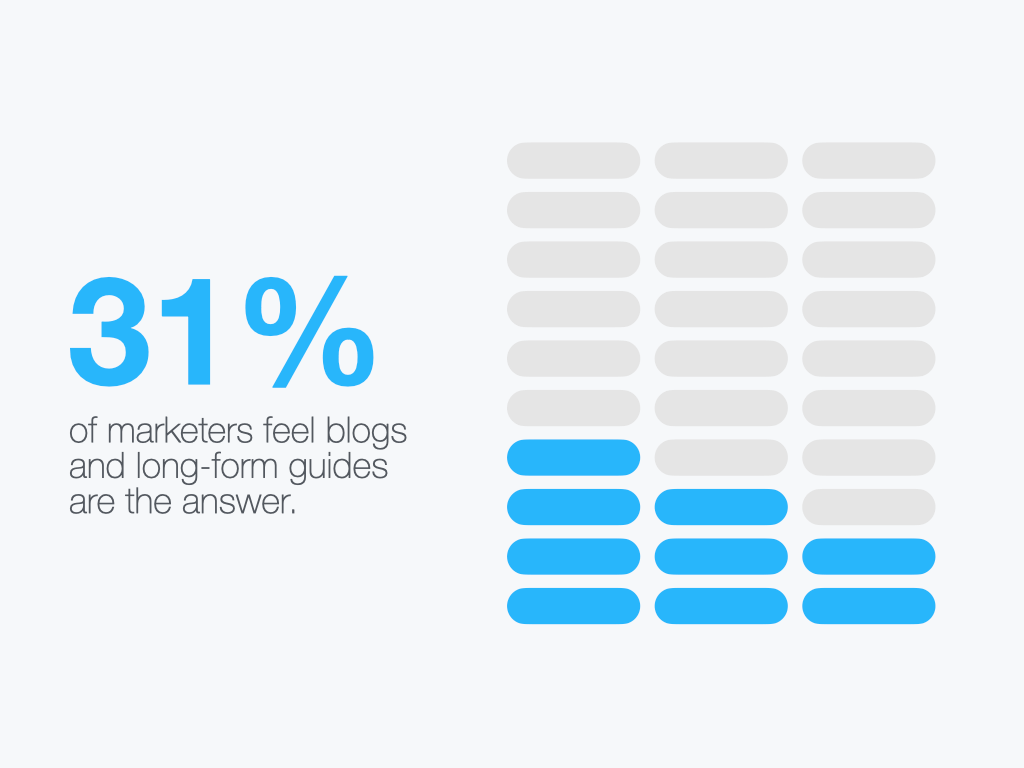
42% of marketers agree that events, whether online or offline, help secure leads, and when complemented by ebooks and white papers, they can also help nurture leads to become proactive clients.
For content writing software like Grammarly, they would find their audience on LinkedIn. For a graphic design software like Canva or Pixabay, Instagram is a better pick. Nonetheless, these companies promote themselves everywhere, with some priorities.
Automation
CRM providers naturally use their own CRMs for their own businesses, which is the most convincing way of selling the product. Using it yourself and seeing if it really works for any business, the best way is to start right at your own home. If it doesn’t work for your business, it probably won’t work for any other business either.
However, for other services providers, you also have to use a marketing automation tool because if you were sending just one mail to one lead, that would be another thing. If you’re really looking to grow ahead, you would have to probably send 100 cold emails a day and that is where you would need marketing automation, which also helps you capture your leads directly from your different channels and load them into one dashboard. The more you automate your work, the more time and effort you would have created for your team to churn out some productive ideas.
- 56% of marketers are automating marketing, 23% are automating their content delivery.
- 20% of respondents report they are using automated email marketing campaigns
- 68% of businesses are using automation in some way

Inaccurate and Irrelevant Metrics
When it comes to evaluating whether or not the marketing strategy has worked, most B2B marketers agree they do not have the right tools. It would require an arsenal of high-tech and up-to-date technology trends, for example – Google analytics’ reporting, the best-in-class CRM software, marketing automation tools, budget mappers, among others.
However, tools alone won’t improve the strategy!
Marketers often find themselves puzzled as to which metrics best define their performance: Is it the number of likes? Is it the organic traffic? Or is it the retention rate? Or do we settle for the final number of lead conversions?
Different marketers present different schools of thought, however, one must also remember tech marketing has never been a “one size fits all” plan. Based on the audience, the required action, and the campaigning, the metrics and the selection of tools, both, varies.
Marketing Strategies for Tech Companies
Research. Research. Research.
There is no other way around it. If you’re into the business of Information Technology, you have to constantly keep an eye out for your competitors. This can also be seen if we compare top-level players in any industry. You would find that they not only keep an eye out for each other, but they often counteract each other with a counter-offer. HubSpot and SalesForce have comparable plans. GoDaddy and Amazon Web Services have the exact same products and offerings, what makes the distinction is their customization.
However, research does not stop with just competitors. Research is also about understanding the demographic you’re catering to and what the audience needs. An important skill in marketing is to unlearn what you have learned for years previously, to understand what the customer is trying to tell you. You would find all of this and more if you research. For research, the Internet could be your best friend. However, good marketing folks do not solely rely on it, but they have their own methods. Get into the customers’ minds, understand their pain points, and alleviate them at each touchpoint.
Influencer Marketing
Influencer marketing isn’t just working out for the wellness and soap brands only. In any field that you operate in, you would find authoritative figures and goodwill ambassadors, who are genuinely interested in collaborating with brands that offer value to their viewers. You should tap into that base and try to put in your product as something that is of genuine utility.
A great example most of us have come across is the brand “SkillShare” collaborating with experts from various fields and sponsoring their YouTube videos and podcasts, in return for a shoutout right at the start of the video or the podcast. SkillShare would also provide them with a platform to share their expertise in the format of a course.
Tech companies like CRM providers or hosting and web development service providers could experiment with different sets of influencers (micros – less than 20,000 followers, moderate – 1,00,000 followers, and if possible, macros – 1m+).
You would have to first identify some of the key tech reviewers, writers, and influencers in your segment. You could sponsor their next creation for a word of mouth in return. You could offer them a barter as well.
Peer-to-Peer Reviews
From a customer point of view, this marketing could just be the most important. All that you’re doing here is allowing other online aggregators to use your software and publish their genuine reviews on it. The two upsides are that you either find out your bugs and loopholes and end up improving them, or you get a genuine recommendation.
You would find many websites like Capterra and G2 do it, where they use every possible CRM from the newest to the oldest and run them against each other.
This not only helps you get the word out, but it also helps the customer make an informed decision. If you put yourself in the position of a customer, you are most likely to visit these websites to fully understand what you’re missing out on when you make a purchase. A peer-to-peer review is a great and healthy way of positioning your product. If it is really all that good and you’re confident, it would only improve your service rankings and positioning in the industry, which is a win.
Content Marketing
Content marketing for IT companies is vastly different from other industries simply because of the kind of content it is. It is very technical and even the wisest experts, the coders themselves, are likely to encounter bugs and get questions that have never been answered.
In an ever-evolving field, the doubts are endless and they can be used as an opportunity to educate, generate demand, and to market your products as well. You can indulge in online value addition, where you actively give out answers.
There are multiple ways of addressing your business content needs. The most common format is to create a website, it would serve as your virtual directory, offering your customer insights on your business and services. On this website, you could have a dedicated and regular blog section. Many tech companies use a piece of separate news and PR section, while few pack it all in the blogs.
For tech companies, blogs can be of different formats: How-to-use guides, industry trends, thought leadership, and so on.
However, apart from blogs too, tech marketers know of various other content avenues like white papers and ebooks to help educate their masses and potentially bring more leads. Now, each of these content pieces would have different use cases.
For instance, a white paper or a documented manual is more useful when a lead is already in the funnel and looking to become a prospect or perhaps, they have had some questions about your product. However, if you have met a lead in an event, you would probably be better off mailing them an ebook first, which also helps your marketer gauge their interest, based on whether or not they have been receptive to this offering.
80% of B2B marketers believe content, which is personalised for the top management of the client’s board is more successful.
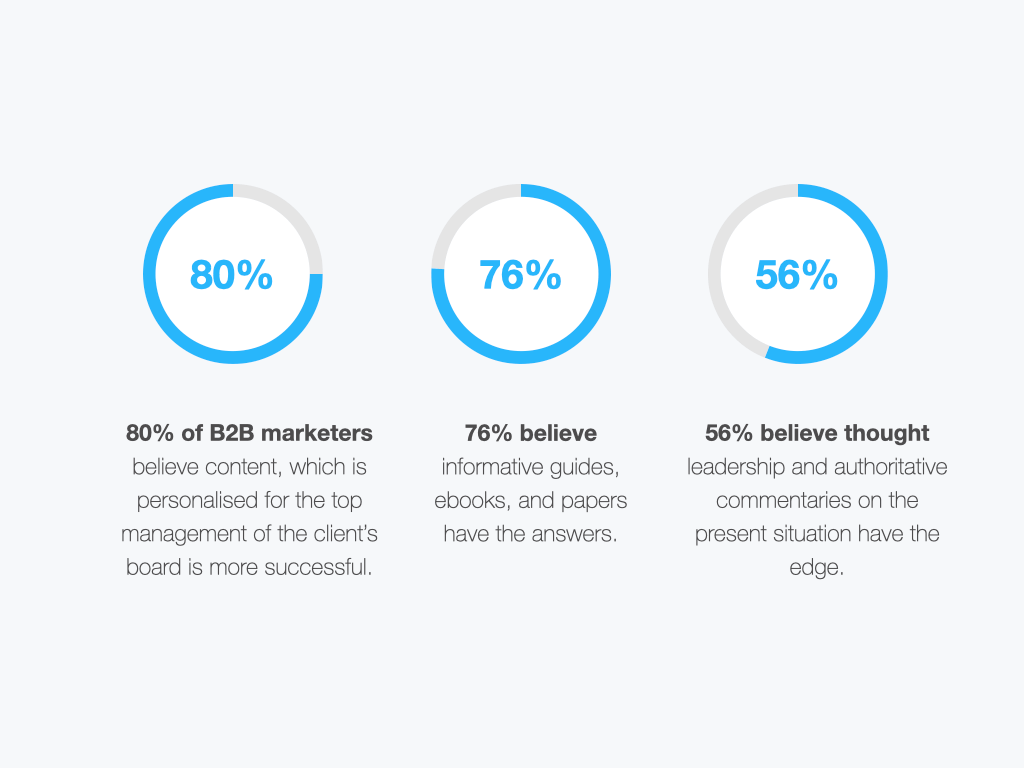
76% believe informative guides, ebooks, and papers have the answers. 56% believe thought leadership and authoritative commentaries on the present situation have the edge.
While their ideas on what’s working may be different, a majority of them agree that content marketing needs to be worked upon. 39% of participating tech companies mentioned in the study that B2B marketers would like an agreement between the sales and the marketing folks to create optimized content pieces, while 22% would like higher adoption of automation in content distribution.
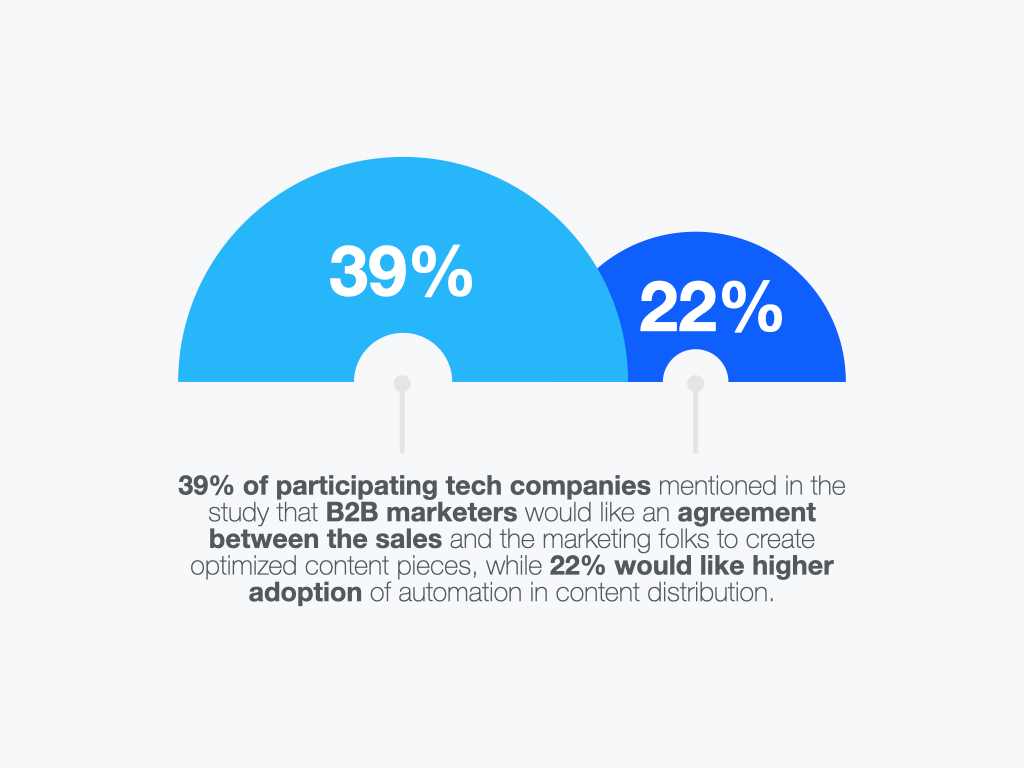
Videos
Now, when we say “video”, we don’t actually mean to restrict you to “only videos”. We are talking about the power of “visuals”. Anything that is “moving pictures” can help your audience understand the product step-by-step. Now, you could have the same content over a blog where you could follow a WikiHow-like format, but the reason why this works better in videos is that your audience gets a hang of it. 48% of marketers feel B2B content becomes more sticky in a video format and 33% of them outsource it.
These can be usage tutorials and case studies. Instead of publishing long theoretical papers, more and more companies are now making the move to video marketing. Interactive content is favoured by 97% of marketers. To get more interactions, you should encourage your marketing folks to experiment with gamification.
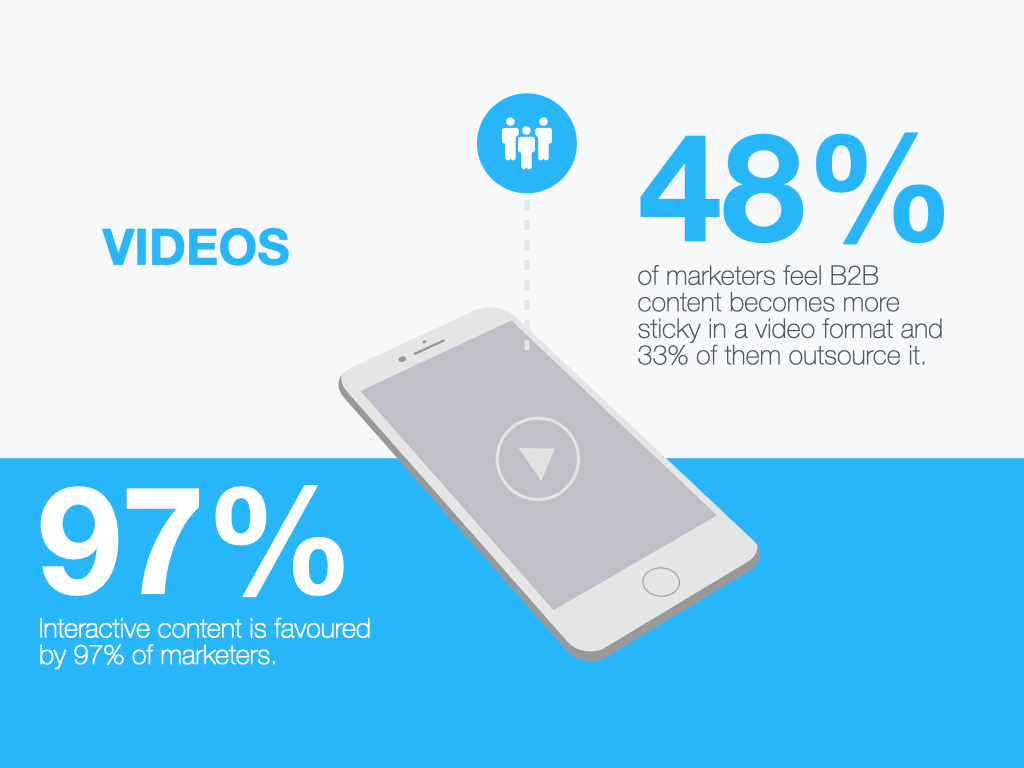
A great example of this is the search engine and behemoth, Google. “Think With Google” is a tool, which allows marketers to check for less-used but high-search keywords, audit their marketing strategies, and more.
Think of yourself as the end-user, it’s not difficult to see why a video works as the customer walks with you as you take them through the process. You would find this in HubSpot, which has also used videos for its landing pages as well.
Relationship Marketing
This is crucial for IT providers because chances are that you are more likely to retain and upsell to your older customers than find new ones, who are actually willing to convert immediately. So, it is always a good idea to approach cross-selling and upselling to increase your MRR. Now, how you do that is by maintaining contact with your existing customers.
Relationship marketing can also play at multiple channels in your social media, where you directly engage with the comments that you receive or via conducting regular cold calls and meetings with your existing customers.
Web Events are also a huge part of relationship marketing for IT companies as we have already established that demand generation happens very often in events and COVID-19 has changed the way people do events, which is now happening virtually. Webinar consumption went up by 239% for B2B.
Omnichannel marketing
As the name suggests, omnichannel marketing requires a brand to be everywhere. Omnichannel marketing is the practice of providing a seamlessly woven, unanimously distributed experience to users from every channel that you may use.
It is important for a brand to be present everywhere. Although most IT companies focus on their website and some would also focus on LinkedIn, it is important that you have a solid presence everywhere and that no customer goes unnoticed.
Unfortunately, Facebook, with over 60 million business pages, has more than 80 million unattended and unresolved queries.
For this reason, we love Microsoft, which uses its Instagram handle to celebrate its customer success stories. With the famous “#DoMore” series, Microsoft has captured human stories of inspiration, which may not have much to do with Microsoft’s products directly, and yet, they find a shoutout from the company for being themselves. This comes as a refreshing break from most IT companies just using their social media to push technical updates and new products.
Personalise
Customer is the king, and sending customer-centric marketing messages is important. You can see a 50% rise in your mail open rates just by using the recipient’s name in the mail copy or pretext. However, personalisation is beyond mails.
A great example of this would be Netflix. An average user gets 40-50 movie suggestions at Netflix, based on their personal tastes and settings. No two users ever get the same list of 40-50 movies. This is the edge Netflix has had over its contemporary, Amazon Prime.
Get Feedback
Don’t be afraid to seek customer testimonials actively and while you do it, you should be honest about it. If there are negative testimonials, you should look at pain points and try addressing them immediately. There are high chances that a learning curve will be a constant bottleneck, and you should work on easing the process.
However, an important thing to keep in mind here is that when you do get feedback, how you handle it would make the world’s difference. Now, by handling it we do not mean just improving on it. A lot of companies actually make this into case studies where they present how they worked upon their own weaknesses. The world is used to case studies that boast and present strengths. Plus, you get extra marks for honesty!
Don’t be afraid to experiment
65% of people participating in a study, in the age-groups of 25 to 50, use voice search. Voice-recognition fueled AI would be a core area of experimentation in this decade.
No one, other than IT players, would know this better that business is constantly evolving and if we keep ourselves stuck on a particular format, then, eventually someone is going to do it fresher and rejuvenate the market. So, it is best for the old brands to do that while they still have the traffic coming.
In 2011, HubSpot offered a free inbound marketing course, with just hopes to create a better sales and B2B tech workforce. Today, HubSpot Academy offers 350 million free courses and is among the primary roots behind their traffic, positioning them as niche gurus.
Things to Do Before Getting Started with Tech Marketing
Target audience
The very first thing that you need to sit with before you even begin thinking about your product, is understanding your target audience. “Where are they? What is their buying capacity? What are their pain points?” These are all important questions that you should address as a tech company. If you offer a CRM solution, then, you have to understand the various customer touchpoints, which your CRM will go through before it even becomes a sale. The first person to evaluate whether they want to buy the service of a CRM or Cloud is the CEO if it’s a small startup, or it’s the procurement team, in the case of bigger companies.
After them, it will come to the actual end-users of the product, and then, it will go to various teams. You need to have a very well fleshed-out plan on what actually happens when you pitch the product to your market and who is the end-user. How are they going to use it? What are the problems they may have? What are the solutions you provide? What could you do to possibly make things better?
Segmentation
All leads aren’t going to convert and this is the mindset with which you need to enter the market. While you can absolutely be optimistic, the fact remains that a lot of people may end up buying your competitor’s product and a lot of leads go cold, so you need to diversify your leads, your prospects, your referrals, your existing customers, and you need to devise different marketing strategies for each group.
Now, you can also have subgroups in these categories. For example, your leads can be filtered based on their buying capacity and inclination towards which product, in case, you offer many products. This segmentation will help you receive more achievable results.
Customer persona and journey
Now, once you have understood who your audience is, it is important to understand how would they approach your company. Let us say when a lead reaches out to you via social media and your CRM system takes it in, what is the next step? How do you reach out to them once they have shown interest? What is the next step once they have booked the demo, when do you follow up next? If they have an issue with the purchase decision, do they have white papers or ebooks that can facilitate the decision? These are all questions you need to answer.
Moreover, when penning down customer personas, most companies would only consider an ideal persona, the best-case lead. This lead loves it, can get it, and would advocate it. However, as reality would have things, you should create more practical personas, both positive and negative, to be prepared for all the ups and the downs.
Product specs
Now, this is right at the centre of this list for a very good reason because this is the heart of your marketing strategy. B2B IT providers are essentially selling a service or a product at the very core of the business. Your marketers need to understand that product down to the T and not just your marketers, anybody in your whole company, who’s responsible for external communication, needs to know the product to be able to contribute towards it.
You need to be very sure of what USPs sell for your products, what are the weaknesses and overlooked areas. The W in SWOT is often ignored, and that can lead to embarrassing customer interactions. Not being aware of your weaknesses is like exposing yourself to an attack.
Many a time, bad customer reviews come when they do not get what they were promised, never making an exaggeration when it comes to your product specs is an important part of good marketing strategies. How are you going to improve and what is the game plan one year down the line or five years down the line? The main purpose that you accomplish with your product should also be a part of the mix.
Competitor Research
They often say that you should just focus on what you’re doing and not look at others, but this does not work in IT because the industry is changing faster than you would read this ebook, and for that purpose, you always need to stay updated. You would see that HubSpot and Salesforce don’t just have competitive plans, they also offer features that are similar and so they always try and find out that one crack in the wall through which they can push their agenda faster.
Budget
Money is a key element of your marketing mix. If you’re overspending than what your budget allows, or if you spend at the wrong places, then, your returns would obviously show the dent. You need to sit down and hatch mock plans on how to budget. How much do you want to spend on, say, a product manager’s job role? How much do you want to spend on your social media marketing, your paid promotions, your influencers?
Choose your channels
Research hints that most IT providers do not really perceive Facebook and Instagram as their primary channels because the services are not of that nature. LinkedIn is a good platform. Online community forums are great platforms. However, the most effective platform is actually your digital home itself. You would also find that your website is probably the best platform that you can aim for because this is where all your information is. So, the primary objective for tech marketers will be to actually create convincing landing pages that ultimately redirect your audience to your main business.
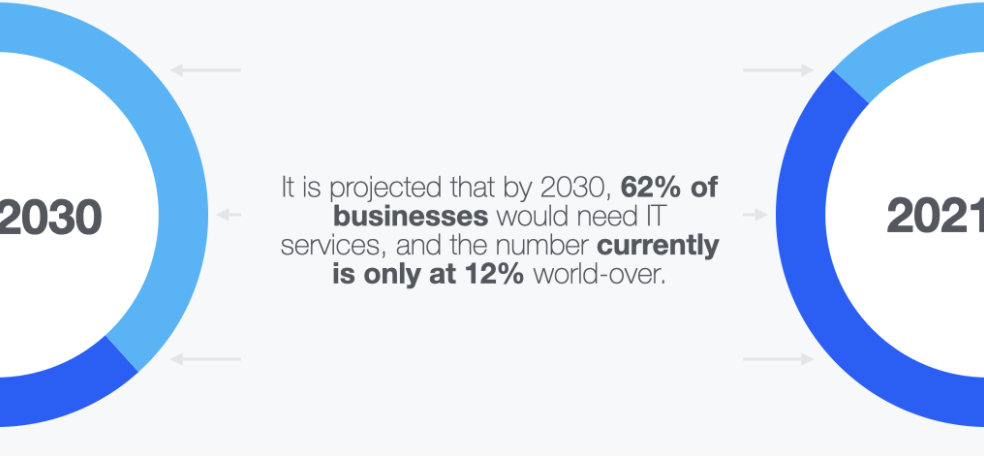
Marketing Channels that Tech Companies Need to Use to Get Traffic & Leads
Landing Page Optimisation
Landing pages are important for B2B marketing the goal here is to direct the audience from the landing page campaign to your website and actually make them convert. Now, how this works out is that your landing page is usually not a permanent part of your website. It is not indexable, but it has a lot of CTAs.
You should concoct out-of-the-rut and effective CTAs. But, not too many because ideally we can hope for 2 or maximum3 actionable effects from the page. Another important factor in landing page optimisation is actually working on the UX. You want to come across as an approachable brand that does not intimidate its users. Now, technology has a lot of jargon, which is why you need a copywriter who can make it presentable. Doing your landing page optimization right can increase your returns by 52%.

Content Marketing
According to research 84% of B2B users heavily rely on written content, which includes blogs, case studies, white papers, and research papers. 78% of tech B2B marketers found that the best way to generate leads was through content such as emails, blogs and social media.
70% of B2B companies have a blog, which they use to produce content on their products and the sector in general.
But only 40% of them use it to educate their masses truly, for most, it’s a mash of copy+content, where the end goal is to get a hit on the sales button.

Not shockingly, educational and help-driven blogs get 50% more traffic.
These should add value instead of just serving the purpose of SEO. While they can be used to bring traffic to your website, their main purpose should be to help any existing customers understand your product better and for any new leads to find the information they need.
You could go one step ahead and start publishing quarterly ebooks as well to comprehensively summarise everything that is happening at your brand and in the industry in general. A new change in this is videos and podcasts.

Organic Search
This aspect of handling your online business cannot be overlooked. Search Engine Optimisation allows you to index your pages and make them visible to the world at large. When done right, you could rank on top of a search result for your targeted audience and keyword. However, SEO is more than just inserting the right keyword with the right keyword density. SEO is also about working on your UX. How readable is your content? How easy is it for the audience to understand it? Are they staying on the page or are they just moving out because they just couldn’t figure it out?
One must also consider the fact that SEO is a constant exercise. Websites with a weaker domain authority have a slimmer chance of getting listed on the first page, however, with time and content of value, this could happen for them as well.
This is why one must keep at it. Developing traffic with SEO takes months and even years sometimes.
Another aspect is technical optimization. You would also have to ensure that your images are not too big and do not take too long to load. Use alt tags. You also have to ensure that your subheaders contain your keywords. A lot goes into organic visit generation; metadata has to be worked upon. You have to write rich snippets. All this would comprehensively help you rank your website right at the top.
Online PR
Apart from just working on your SEO and internal content, you should also work on generating more outbound links and backlinks for your content. This can be done in various ways. You could also publish online press releases and tie up with other media publications, which are actively looking to do sponsored posts and paid promotions, and you should organize free webinars to help people understand your product to generate awareness. For instance, if you’re working in the cloud hosting space, your webinar should focus on why cloud hosting is the next generation answer for all your storage needs. You should not focus on making sales directly from these webinars and you should make them free, to gain some traction and bring more demand. Remember, demand generation is key!
Social Media Marketing
Most IT companies usually find LinkedIn an important part of their marketing strategy and customers also refer to LinkedIn before making a purchase decision. LinkedIn is favoured by 94% of tech marketers, and 76% of buyers get recommendations for new sellers in LinkedIn’s “similar people” feature recommendation.
Tech companies actively want to post insightful articles and make daily interactive posts with connections. Also, follow influencers in the space. You should try and connect with potential leads. However, apart from LinkedIn, it is also important that you focus on your Twitter, Facebook, and Instagram. Although you may not be using these parts of social media as much as you use your LinkedIn, they can still be helpful. Quora and YouTube would also be primary focus areas where you can educate your leads.
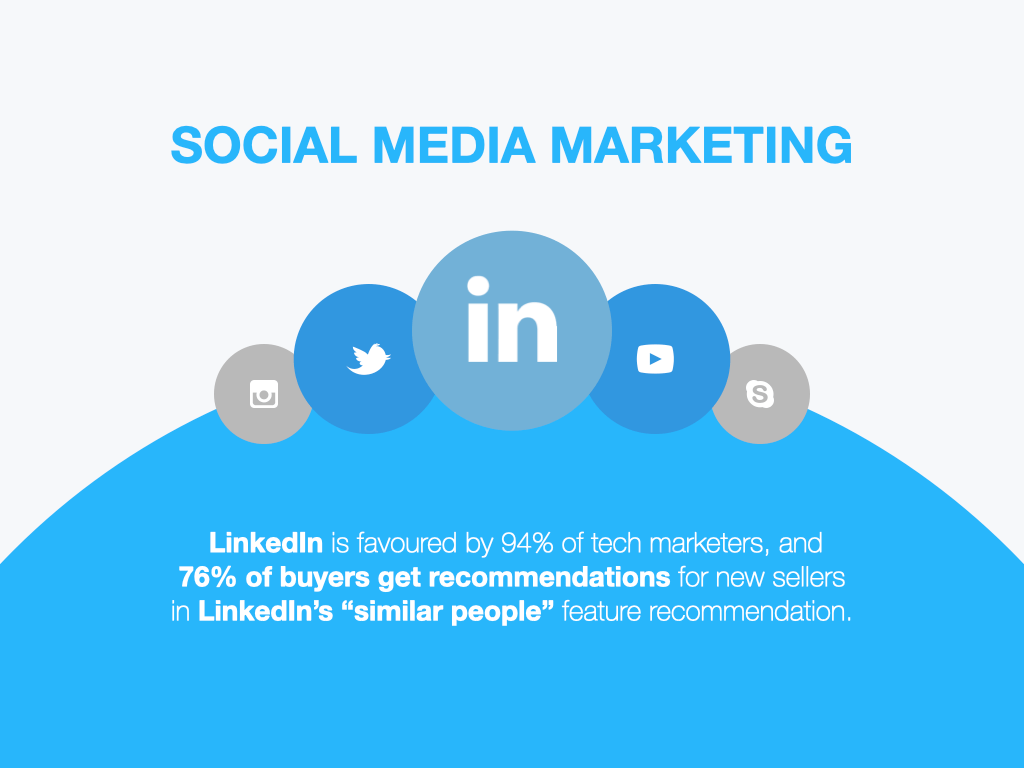
Online Community Engagement
You would find that major IT players like Dell, Microsoft, etc. have their own experienced tech communities. This is a space for tech enthusiasts, programmers, and users; where if you posted a question right now, chances are you would find an option or an answer within the very hour. This community is so active that Microsoft and Dell do not have to rely on their employees to settle the queries. The other active participants would do it for them. So, your goal should be to build a community, where everyone is deeply aware of your product. This starts with you making those questions and you giving those answers. You could have this community right at your own website or join Facebook groups and LinkedIn groups, where people are looking for services and commodities similar to what you offer and you can naturally plug in your brand there. However, make it a point to never be over-promotional.
Events
Events are a huge sales platform for IT companies. Although the pandemic has changed the way people look at events, they are back to being physical. This is where you will meet potential clients. This is also where you’ll get to meet your rivals and people you can collaborate with.
You should make it a point to show up at these tech summits, and while you’re at it, bring your own pitch. However, your pitch doesn’t necessarily have to be a presentation. It can be something like an ebook, which you can offer to reflect your values. Cloudtalk Global 2022 expo, coming soon in London and Istanbul, is an exciting opportunity ahead of us. Cloud Markethink is proud to be organising one of the largest events in the Eurasian cloud computing industry. We hope to see you there too!
Marketing Emails & Newsletter
Marketers noticed a 70% higher traction in emails during the pandemic. This means, yes, people are reading newsletters!
It is via these emails and newsletters that you would be pushing your new updates, your new products, and more importantly, it is via them that you will inform the subscribers of offers and sales. You can also use your blogs to do the same, but marketing emails and newsletters are still an effective method of marketing, and they offer great returns too.
For every $1 put in, email marketing gives back $44.
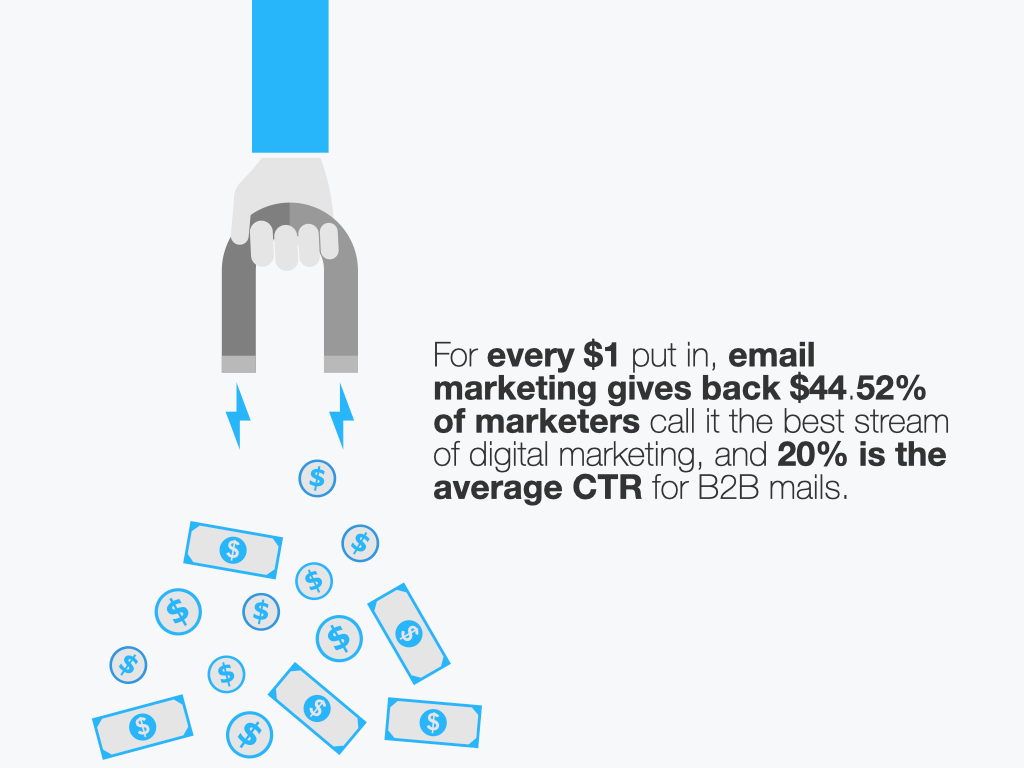
52% of marketers call it the best stream of digital marketing, and 20% is the average CTR for B2B mails.
CLOSING :
As can be seen, tech marketing is a tough challenge. Marketers who understand the nuances of the job and can consistently deliver are regarded as essential. You need a team that not only has extensive experience and tools but also has a full-stack solution that covers all of the channels mentioned above.
Cloud Markethink is a comprehensive 360o tech growth marketing and event organizing firm with experts who have fueled some of the most creative marketing campaigns for some of the most well-known IT brands on the Europe & Eurasian continent.
Our primary services include growth marketing, product marketing, PR events, complete design and development solutions for business websites, growth, and online marketing.
Cloud Markethink, as a full-service marketing provider, ensures that you have complete access to everything marketing. We will guide you through the entire process, from product development to get it on and off the shelves, as well as identifying and targeting the right leads.
Come, let’s begin a growth story today!
Sources:
Please note the information used above has been sourced from various independent studies conducted by independent media publications and IT Providers alike. Please refer to the following links to obtain more exciting numbers and to confirm the sources for the ones mentioned in this ebook:
https://contently.com/2021/10/15/state-of-b2b-content-2020/
https://www.isolinecomms.com/resources/2020-content-marketing-insights/
https://backlinko.com/b2b-content-marketing-report
https://www.techfunnel.com/martech/b2b-demand-generation-content-trends-report/
https://www.martechalliance.com/stories/b2b-marketing-stats-and-trends-for-2021
https://www.digitalauthority.me/resources/content-marketing-strategy-for-it-companies/
https://www.fiftyfiveandfive.com/why-should-you-optimise-for-voice-search-in-b2b-marketing/











